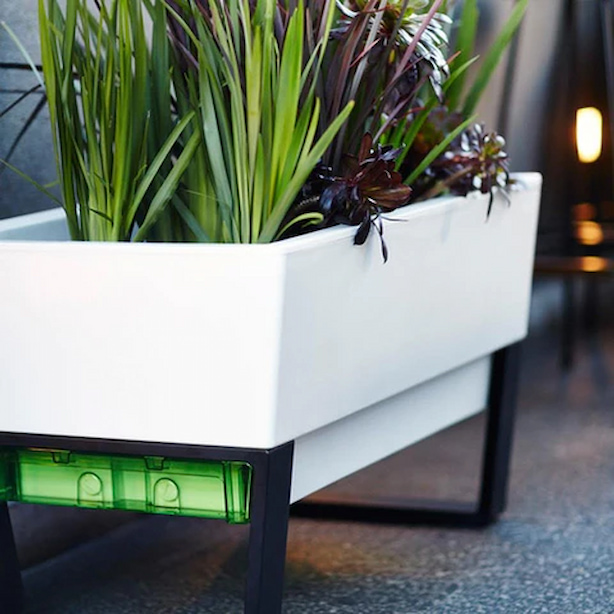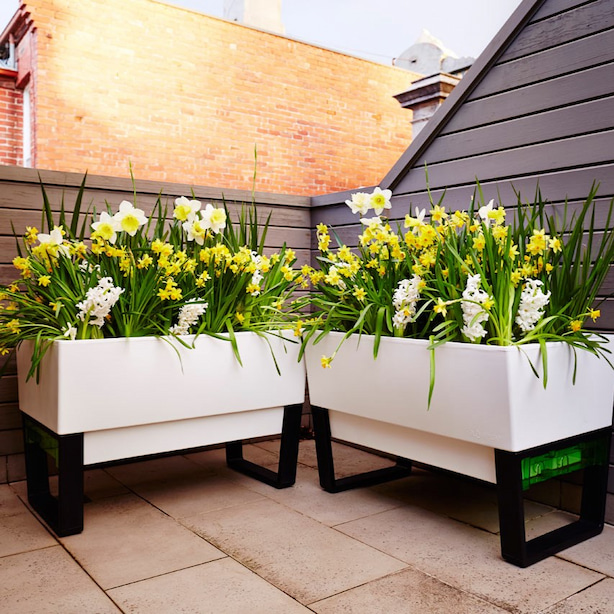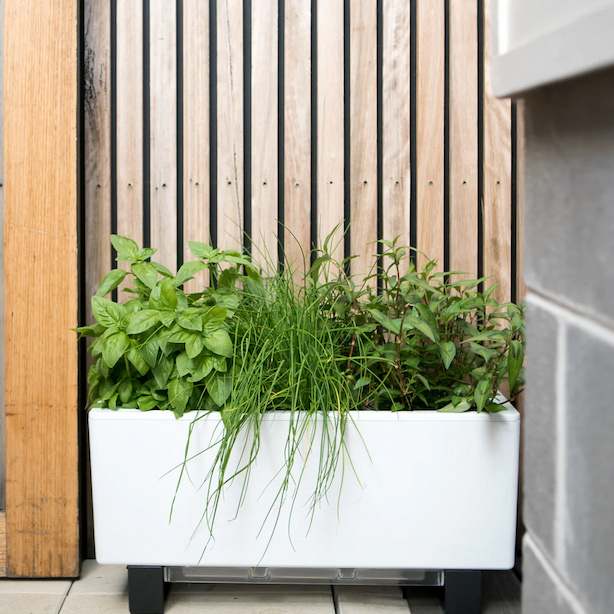Urban Gardening 101: How to Successfully Grow Plants in Containers
Nothing compares to the sense of success you get from biting into a juicy tomato that was once just a tiny seed. Unfortunately, for most of us our hectic schedules prevent us from caring about anyone or anything besides ourselves. And even when we do have the time, our urban homes frequently lack the space needed to grow wholesome, nutrient-dense plants.
But let me be clear – there shouldn’t be anything stopping you from trying your hand at gardening if you really want to. You can always try container gardening if you don’t have the space or the time to maintain a large-scale garden. With the many innovative and aesthetically pleasing container options, it’s possible to start a garden in a limited backyard, on the front porch or even on a balcony.
Select the Right Containers

There are many types of containers that you can use for an urban garden, and the best choice for you will depend on the size and type of plants you want to grow, as well as the space you have available. Here are some options to consider:
- Pots: Pots come in a variety of sizes and materials, including plastic, ceramic, and terra cotta. They are a good choice for small plants or for growing herbs on a balcony or patio.
- Planters: Planters are larger containers that can hold a greater volume of soil and are suitable for larger plants. They can be made of materials such as wood, metal, or plastic.
- Window boxes: Window boxes are long, narrow containers that can be mounted on a windowsill or balcony railing. They are ideal for small plants or herbs.
- Barrels: Barrels can be repurposed as containers and are suitable for growing a variety of plants, including tomatoes, peppers, and beans.
- Raised beds: Raised beds are elevated containers that are filled with soil and are a good choice for growing a variety of plants. They are especially suitable for people with physical disabilities, as they can be built at a comfortable height for gardening.
There is also another option which is especially appealing for people living in urban environments and leading busy lives, and it’s called self-watering planters. The reservoirs that come with self-watering pots can store enough water to keep the soil moist for several weeks at a time.
This implies that depending on the size of the reservoir, you may just fill it up once or twice a month rather than having to water your plants every other or even every day. As a result, modern self-watering planters are the best option if you frequently travel or have a hectic schedule that prevents you from taking care of your plants’ watering requirements.
A contemporary planter with a self-watering feature not only makes gardening easier for the busy person, but it also promotes the health of plants, particularly vegetables. Roots often develop more favourably when they have a constant supply of moisture, which boosts the plant’s health, promotes development, and increases yield.
Self-watering pots also aid in avoiding another error that many gardeners commit: overwatering their plants. The roots will collect as much water from the reservoir as they require because you are not soaking the earth. And to make sure you grow healthy plants free of toxins, pick an urban garden planter box that’s BPA-free, corrosion-resistant and food safe.
These containers also come in many modern designs, so you can choose a stylish urban garden planter box that perfectly fits your balcony or even living room. If you’re going to use the planter box indoors, make sure to look for a design that has a clip-on drip tray that prevents spills and drips.
Choose a Good Location

Measure the space you have available and decide how big you want your garden to be, whether it’s a corner of your balcony, a whole rooftop, or a front porch. There is no such thing as a garden that is “too small,” but the space you have limits the plants you can grow and the pattern you can use.
Look for a spot with good sunlight and easy access to water. The type of exposure your garden area receives to the elements (sun, wind, and rain) each day will also have an impact on the plants you can effectively grow.
Pick Your Plants

This is perhaps the most enjoyable part of urban gardening. Have fun with this step because your urban garden may be anything you want it to be. Are you a pepper fan? Grow them then! Do azaleas always appeal to you? Plant them! When it comes to your choices, the world really is your oyster, but there are a few rules to remember.
Initially, only plant what your area will allow. Avoid crowding your plants and being overly ambitious with your growth goals. Begin modestly and build from there, and plant foods that you genuinely want to eat.
Most urban gardens are centred around vegetables and herbs. Don’t waste money on something you’ll just leave sitting on the plant; this is a terrific approach to enhance sustainability and your intake of fresh produce. Some urban gardeners have themed plots that contain ingredients for their favourite dishes, such as Thai basil for quick stir-fries, green beans, snap peas, and peppers.
Although gardens are meant to be aesthetically beautiful, the most important thing is how much use you will get out of your investment.






